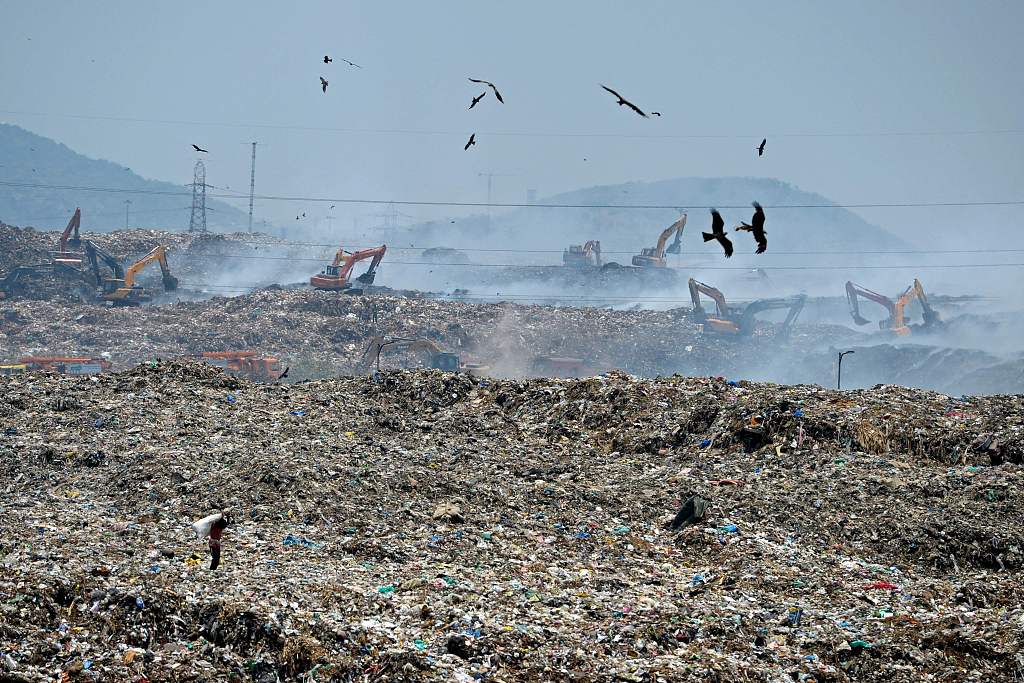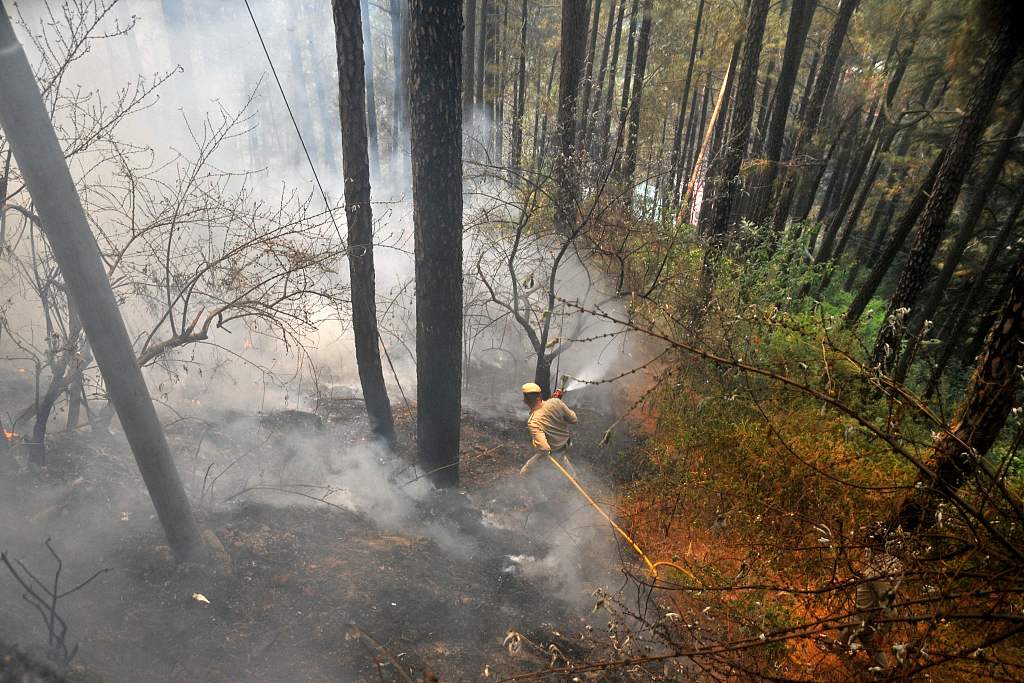Heat waves are common in India in late spring and early summer, but an unusually early heat wave made this March the hottest in India since records first started being kept in 1901.
Not only have people been struggling with the scorching weather since then. The crop harvest is also expected to drop significantly as a result, which could have global implications given the disruption to the food supply caused by the Ukraine crisis.
Gigantic landfills in India's capital New Delhi have caught fire in recent weeks. Schools in eastern Odisha state have been shut for a week and in neighboring West Bengal, schools have been stocking up on oral rehydration salts for kids.
On Tuesday, Rajgarh, a city of over 1.5 million people in central India, was the country's hottest, with daytime temperatures peaking at 46.5 degrees Celsius (114.08 Fahrenheit). Temperatures breached the 45-degree mark in nine other cities.

Workers operate excavators amid burning garbage after a fire broke out in Chennai City in southeast India on April 29, 2022. /VCG
Workers operate excavators amid burning garbage after a fire broke out in Chennai City in southeast India on April 29, 2022. /VCG

A firefighter tries to extinguish a forest fire in Himachal Pradesh state on April 29, 2022. /VCG
A firefighter tries to extinguish a forest fire in Himachal Pradesh state on April 29, 2022. /VCG
But it was the heat in March that stunted crops. Wheat is very sensitive to heat, especially during the final stage when its kernels mature and ripen. Indian farmers time their planting so that this stage coincides with the country's usually cooler spring.
One farmer in Sangrur in northern India's Punjab state said he watched his crop shrivel before his eyes as the usually cool spring quickly shifted to unrelenting heat. He lost about a fifth of his yield. Others lost more.
"I am afraid the worst is yet to come," he said.
Punjab is India's "grain bowl" and the government has encouraged cultivation of wheat and rice here since the 1960s. It is typically the biggest contributor to India's national reserves and the government had hoped to buy about a third of this year's stock from the region.
But government assessments predict lower yields this year, and Devinder Sharma, an agriculture policy expert in northern Chandigarh city, said he expected to get 25 percent less.
Climate change has made India's climate hotter, according Friederike Otto, a climate scientist at the Imperial College of London. Before human activities increased global temperatures, heat waves like this year's would have struck India once in about half a century.
"But now it is a much more common event - we can expect such high temperatures about once in every four years," she said.
India's vulnerability to extreme heat increased by 15 percent from 1990 to 2019, according to a 2021 report by the medical journal The Lancet. It is among the top five countries where vulnerable people, like the elderly and the poor, have the highest exposure to heat. India and Brazil have the highest heat-related mortality in the world, the report said.
Statistics show that in June 2015, a heat wave in India killed more than 2,000 people.
(With input from AP)
(Cover images via VCG)
(If you want to contribute and have specific expertise, please contact us at nature@cgtn.com.)

